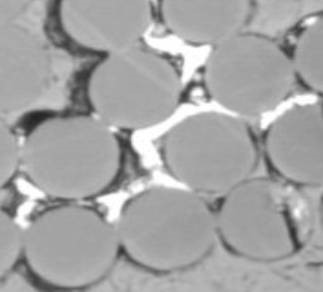 Conductive anodic filament (CAF) formation is a significant failure mode inside multilayer PCBs. It results from an internal electrochemical process forming corrosion products between two opposite, and usually adjacent, charged copper conductors. It leads to lower resistance pathways forming within the laminate.
Conductive anodic filament (CAF) formation is a significant failure mode inside multilayer PCBs. It results from an internal electrochemical process forming corrosion products between two opposite, and usually adjacent, charged copper conductors. It leads to lower resistance pathways forming within the laminate.
There has been a significant increase in concerns about the effect of CAF on board reliability due to:
During CAF testing, the electrical resistance is measured between vias, also known as vertical interconnect access, which are electrical connections between layers of an electronic assembly. A substrate is monitored when a voltage is applied, giving an indication of the propensity of the system to form these corrosion products. The equipment at NPL can detect leakage currents approaching pA, and can log resistance values every 10-20 minutes over test periods ranging from a few hours to several months. NPL has CAF measurement facilities for up to 512 channels per run with bias and measurement voltages from 5 to 1000V.
Our services and capabilities include:
SIR, CAF and condensation testing for electronic assemblies
Find out more about the advantages of using CAF and SIR testing to evaluate assembly processes and materials. It also covers vehicle design, how to conduct testing and analyse the results. Watch webinar View slides
How to avoid conductive anodic filaments (CAF)
Outline of how CAF failures form and details about NPL’s results on which PCB fabrication and assembly variables, including PCB materials, via spacing, drilling, and number of reflows, have the greatest effect on CAF propensity. Watch webinar View slides
Susceptibility of glass-reinforced epoxy laminate to conductive anodic filamentation.
A study of FR4 laminates, in the form of high plated-through-hole (PTH) density multi-layer test circuits, exposed to different manufacturing conditions and studied for resistance to CAF. Download the report
Find out more about our next webinar here.
Don’t see what you are looking for? Our diverse skill set enables us to provide bespoke solutions. Please contact us to discuss your requirements.
Our research and measurement solutions support innovation and product development. We work with companies to deliver business advantage and commercial success.
Contact our Customer Services team on +44 20 8943 7070